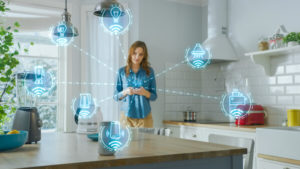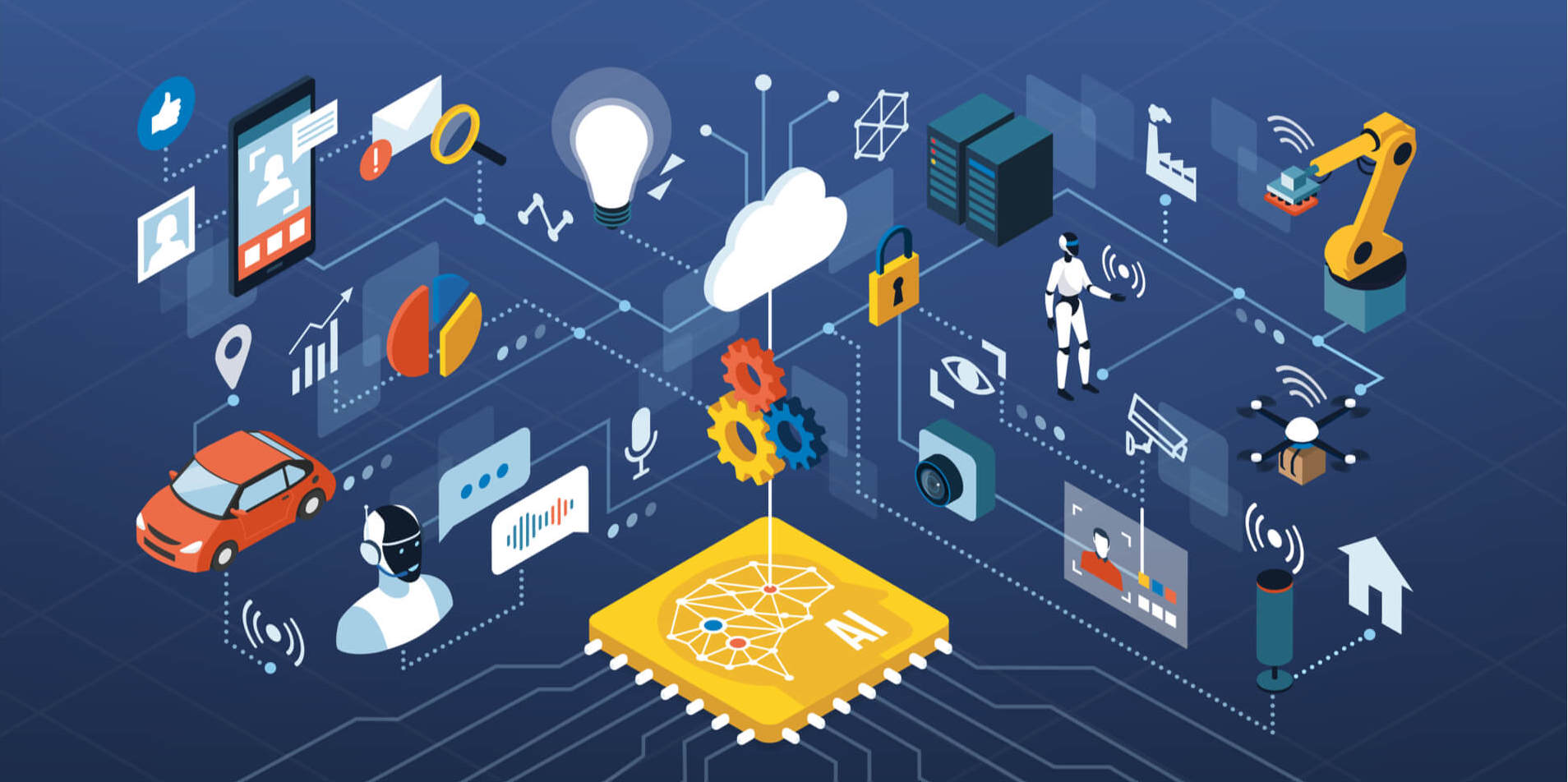How can face analysis be used to improve smart homes? Picture this: As you enter your home, a security camera scans your face and automatically regulates the lights, temperature, and music based on your expressions and mood. When you and the rest of your family leave, it changes the settings automatically to turn off all electronic appliances and even lock the door.
That’s face analysis in a smart home at work.
 As artificial intelligence (AI) and computer vision get more advanced and cost-effective, we are seeing a lot more devices using face analysis technology. On the home front, smart devices connect to the internet and to one another to make homes more comfortable, enjoyable, and secure.
As artificial intelligence (AI) and computer vision get more advanced and cost-effective, we are seeing a lot more devices using face analysis technology. On the home front, smart devices connect to the internet and to one another to make homes more comfortable, enjoyable, and secure.
Thanks to the utilities they offer, the smart home device market is expected to grow from $102 billion by year-end 2021 to $182.4 billion by 2025, an annual revenue growth rate of 15.64%.
How Face Analysis Can Build a Smart Home That’s Actually Smart
The number of smart homes is expected to surpass 350 million in 2023, and AI and face analysis technology will increasingly play a significant role in building truly smart homes. Here are three key applications that they can make even smarter.
1. Smart TVs
 Many smart TV providers are using AI to track what people watch, which assists them in providing helpful user-centric recommendations. In fact, AI is making smart TVs more like current social media platforms, where advertisers can measure their content marketing efforts, better target ads, and track them for performance.
Many smart TV providers are using AI to track what people watch, which assists them in providing helpful user-centric recommendations. In fact, AI is making smart TVs more like current social media platforms, where advertisers can measure their content marketing efforts, better target ads, and track them for performance.
With face analysis, a smart TV can do more than track just what users watch. It can tell when people are watching, when no one is watching, or if the volume is too loud based on the person’s facial expressions and reactions. It can then intelligently adjust the settings accordingly. If it detects that it’s a child watching TV versus an adult, it can automatically switch to a more kid-friendly channel or apply predetermined parental filters. Or if there’s no one sitting in front of the TV for a specific amount of time, it can automatically record the current program and switch off.
2. Smart Home Monitoring Systems
How can parents make sure their children are safe at home while they’re traveling or at work? It can be challenging to always know whether or not they’re secure in the house without physically monitoring them the whole time.
Face AI in smart home monitoring systems gives parents an extra pair of eyes to keep watch over their teenager when they physically can’t. For example, it can tell how many people are in the house, which may indicate that their teenager is hosting a party while they’re away.
Face AI in smart CCTVs can also alert homeowners whenever a “new” face shows up. For example, when kids are playing out in the backyard, the smart CCTV will send an alert to the parents if it detects an additional person entering the premises. Smart doorbells like Ring can send notifications to the homeowner’s smartphone regarding guests at the front entrance, but face AI can provide even more detailed characteristics of the person at the door.
3. Smart Appliances
 Kids going to the fridge, opening and closing it frequently, is an everyday occurrence that frustrate many parents. But what’s even more exasperating is when they leave the fridge door open despite incessant reminders to close it after using, which makes the unit’s compressor work harder and burn more electricity.
Kids going to the fridge, opening and closing it frequently, is an everyday occurrence that frustrate many parents. But what’s even more exasperating is when they leave the fridge door open despite incessant reminders to close it after using, which makes the unit’s compressor work harder and burn more electricity.
With face AI, your smart refrigerator can detect whether or not there’s someone standing in front of it. If the door has been open for a specific amount of time and it can no longer detect anyone in the vicinity, it can then automatically close. If it detects a small child, it can also keep the door locked if so desired. Likewise, if a smart stove detects a child in close proximity attempting to play with the stove controls, it won’t turn on.
Making Smart Homes Smarter with FaceTrace Technology
AlgoFace’s FaceTrace is one of the most accurate facial trackers available. With 209 landmark points detecting and tracking human faces it covers a large set of features and a wide array of expressions, effectively capturing full expressive movement. It works seamlessly even in the most challenging lighting conditions by integrating with both RGB and infrared cameras.
With AlgoFace’s built-in identify-free biometrics, you don’t have to worry about privacy. The technology complies with both GDPR and CCPA standards, and “operates on the edge” using a unique compression algorithm to bring lightning-speed augmented reality experiences to users while allowing them to control their personal identifying information. The data that drives AlgoFace’s AI comes from a diverse, inclusive samples and datasets, which allows it to reliably recognize any skin tone or texture removing this potential bias..
To see for yourself how AlgoFace can help improve the smart home industry through face AI, request your free trial of AlgoFace today.




